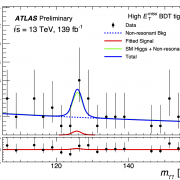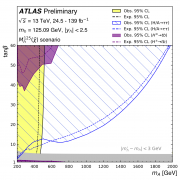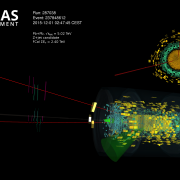Access to Collaboration Site and Physics Results
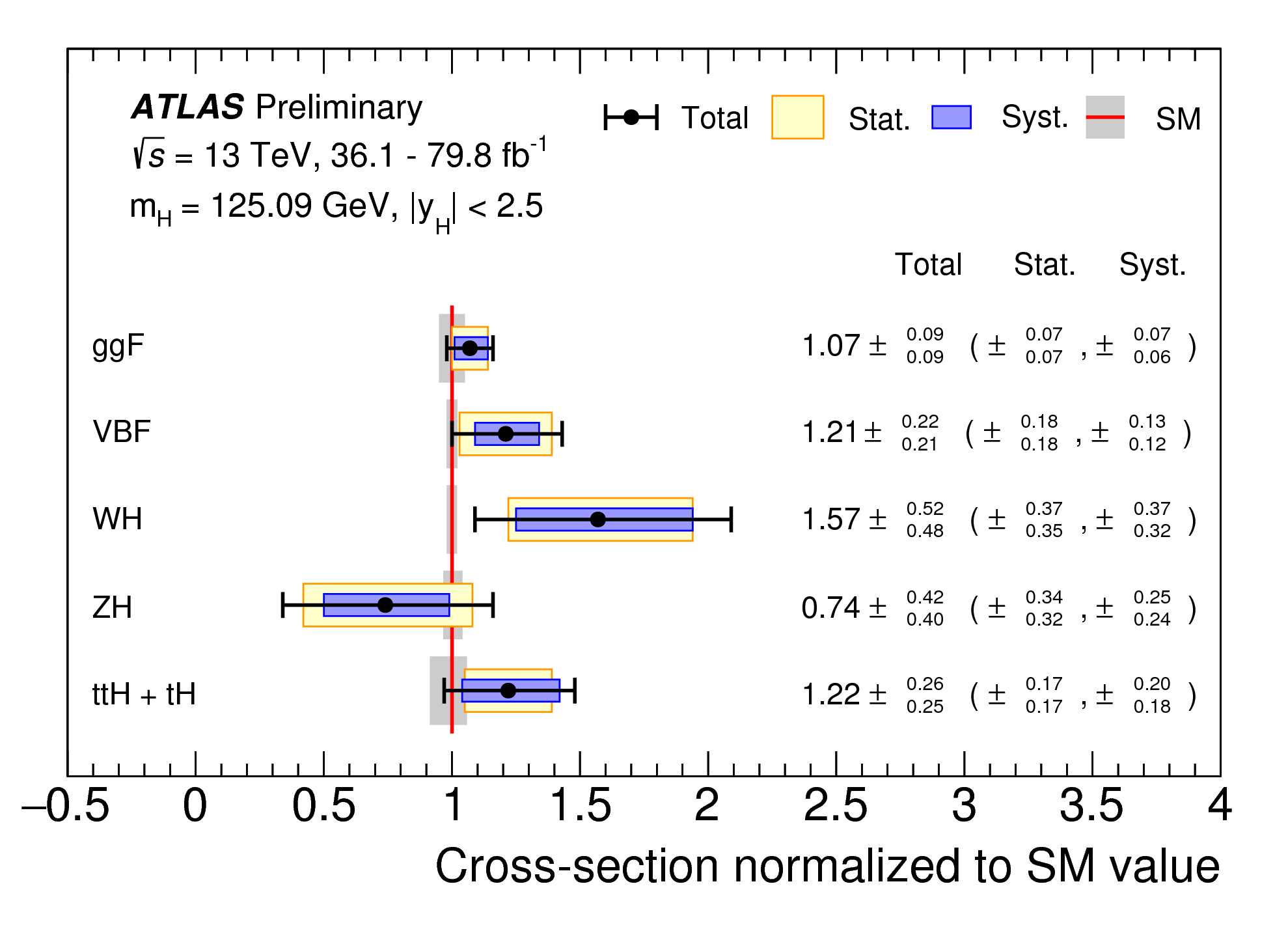
The Higgs boson, discovered at the LHC in 2012, has a singular role in the Standard Model of particle physics. Most notable is the Higgs boson’s affinity to mass, which can be likened to the electric charge for an electric field: the larger the mass of a fundamental particle, the larger the strength of its interaction, or “coupling”, with the Higgs boson. Deviations from these predictions could be a hallmark of new physics in this as-yet little-explored part of the Standard Model.
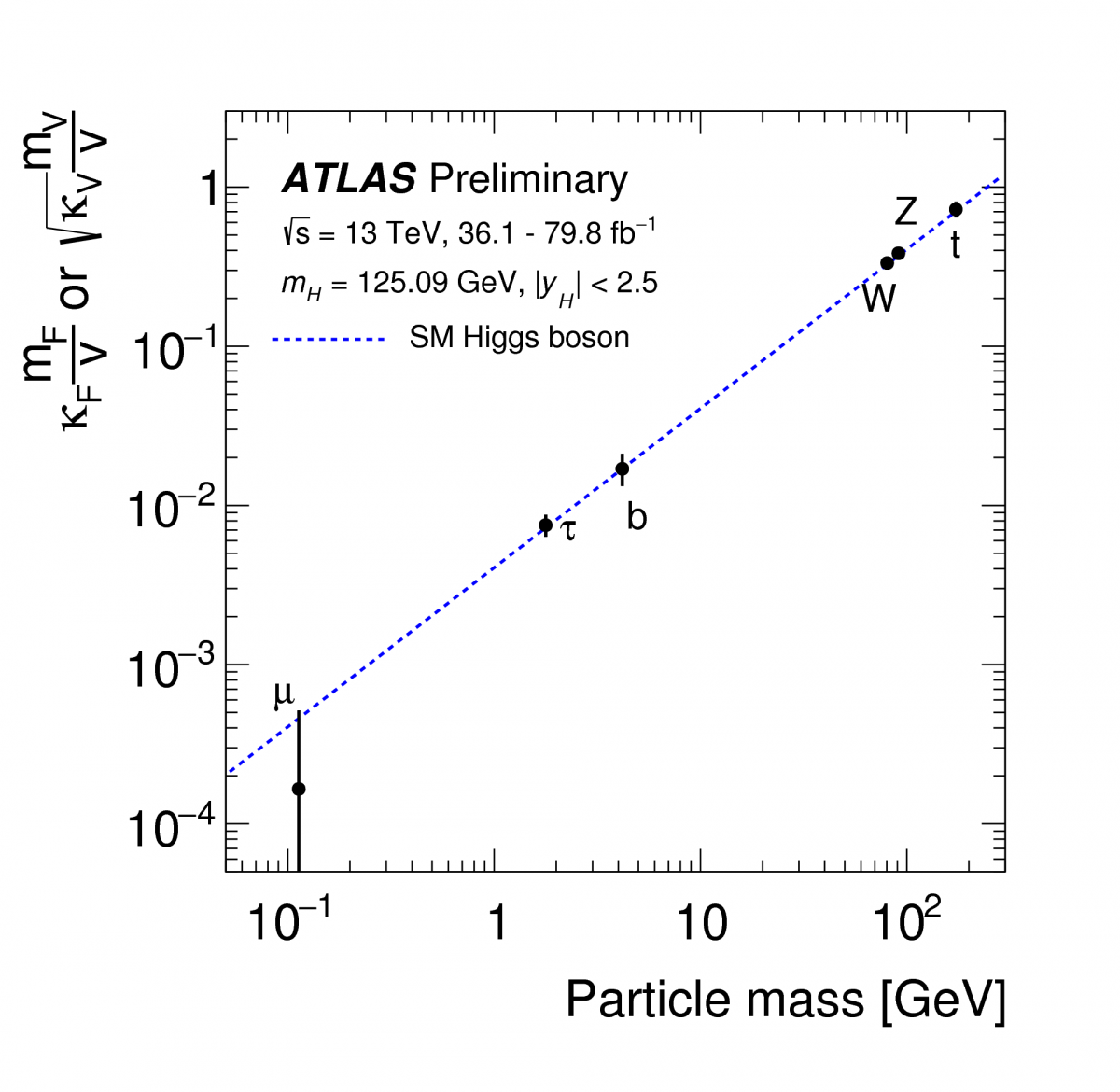
Higgs boson couplings manifest themselves in the rate of production of the Higgs boson at the LHC, and its decay branching ratios into various final states. These rates have been precisely measured by the ATLAS experiment, using up to 80 fb–1 of data collected at a proton-proton collision energy of 13 TeV from 2015 to 2017. Measurements were performed in all of the main decay channels of the Higgs boson: to pairs of photons, W and Z bosons, bottom quarks, taus, and muons. The overall production rate of the Higgs boson was measured to be in agreement with Standard Model predictions, with an uncertainty of 8%. The uncertainty is reduced from 11% in the previous combined measurements released last year.
The measurements are broken down into production modes (assuming Standard Model decay branching ratios), as shown in Figure 1. All four main production modes have now been observed at ATLAS with a significance of more than 5 standard deviations: the long-established gluon-gluon fusion mode, the recently-observed associated production with top-quark pair, and last-remaining weak boson fusion mode, presented today by ATLAS. Together with the observation of production in association with a weak boson and of the H→bb decay in a separate measurement, these results paint a complete picture of Higgs boson production and decay.
Physicists can use these new results to study the couplings of the Higgs boson to other fundamental particles. As shown in Figure 2, these couplings are in excellent agreement with the Standard Model prediction over a range covering 3 orders of magnitude in mass, from the top quark (the heaviest particle in the Standard Model and thus with the strongest interaction with the Higgs boson) to the much lighter muons (for which only an upper limit of the coupling with the Higgs boson has been obtained so far).
The excellent agreement with the Standard Model, which is observed throughout, can be used to set stringent limits on new physics models.

The measurements also probe the coupling of the Higgs boson to gluons in the gluon-gluon fusion production process, which proceeds through a loop diagram and is thus particularly sensitive to new physics. In the Standard Model, the loop is mediated mainly by top quarks. Therefore, possible new physics contributions can be tested by comparing the gluon coupling with the direct measurement of the top quark coupling in Higgs boson production in association with top quarks, as shown in Figure 3.
The excellent agreement with the Standard Model, which is observed throughout, can be used to set stringent limits on new physics models. These are based on possible modifications to Higgs couplings and complement direct searches performed at the LHC.
Links:
- Combined measurements of Higgs boson production and decay using up to 80 fb−1 of proton-proton collision data at 13 TeV collected with the ATLAS experiment (ATLAS-CONF-2018-031)
- ICHEP2018 presentation by Nicolas Morange: Measurements of Higgs boson properties using a combination of different Higgs decay channels
- ICHEP2018 presentation by Tancredi Carli: Highlights from the ATLAS and ALICE Experiments
- ICHEP2018 presentation by Giacinto Piacquadio: Higgs Boson Measurements from ATLAS and CMS
- See also the full lists of ATLAS Conference Notes and ATLAS Physics Papers.


